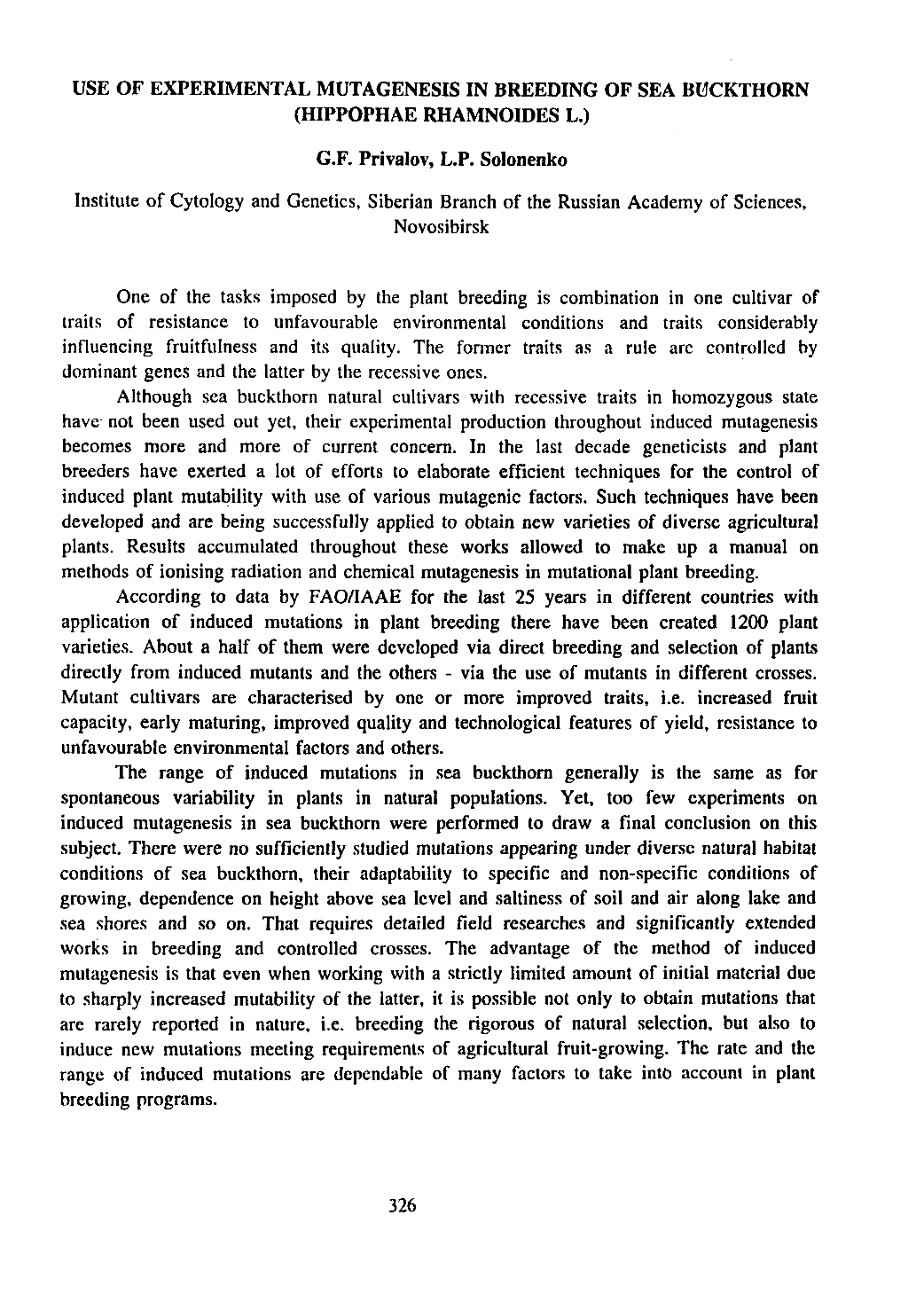

USE OF EXPERIMENTAL MUTAGENESIS IN BREEDING OF SEA BUCKTHORN
(HIPPOPHAE RHAMNOIDES L.)
G.F. Privalov, L.P. Solonenko
Institute of Cytology and Genetics, Siberian Branch of the Russian Academy of Sciences,
Novosibirsk
One of the tasks imposed by the plant breeding is combination in one cultivar of
traits of resistance to unfavourable environmental conditions and traits considerably
influencing fruitfulness and its quality. The former traits as a rule are controlled by
dominant genes and the latter by the recessive ones.
Although sea buckthorn natural cultivars with recessive traits in homozygous state
have not been used out yet, their experimental production throughout induced mutagenesis
becomes more and more of current concern. In the last decade geneticists and plant
breeders have exerted a lot of efforts to elaborate efficient techniques for the control of
induced plant mutability with use of various mutagenic factors. Such techniques have been
developed and are being successfully applied to obtain new varieties of diverse agricultural
plants. Results accumulated throughout these works allowed to make up a manual on
methods of ionising radiation and chemical mutagenesis in mutational plant breeding.
According to data by FAO/IAAE for the last 25 years in different countries with
application of induced mutations in plant breeding there have been created 1200 plant
varieties. About a half of them were developed via direct breeding and selection of plants
directly from induced mutants and the others - via the use of mutants in different crosses.
Mutant cultivars are characterised by one or more improved traits, i.e. increased fruit
capacity, early maturing, improved quality and technological features of yield, resistance to
unfavourable environmental factors and others.
The range of induced mutations in sea buckthorn generally is the same as for
spontaneous variability in plants in natural populations. Yet, too few experiments on
induced mutagenesis in sea buckthorn were performed to draw a final conclusion on this
subject. There were no sufficiently studied mutations appearing under diverse natural habitat
conditions of sea buckthorn, their adaptability to specific and non-specific conditions of
growing, dependence on height above sea level and saltiness of soil and air along lake and
sea shores and so on. That requires detailed field researches and significantly extended
works in breeding and controlled crosses. The advantage of the method of induced
mutagenesis is that even when working with a strictly limited amount of initial material due
to sharply increased mutability of the latter, it is possible not only to obtain mutations that
are rarely reported in nature, i.e. breeding the rigorous of natural selection, but also to
induce new mutations meeting requirements of agricultural fruit-growing. The rate and the
range of induced mutations are dependable of many factors to take into account in plant
breeding programs.
326
Научная электронная библиотека ЦНСХБ









